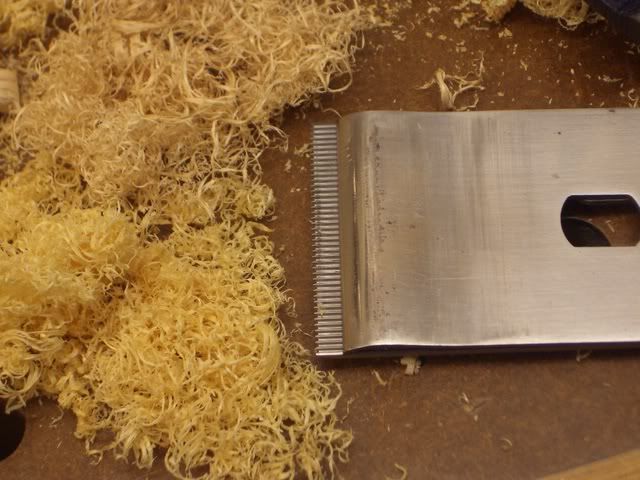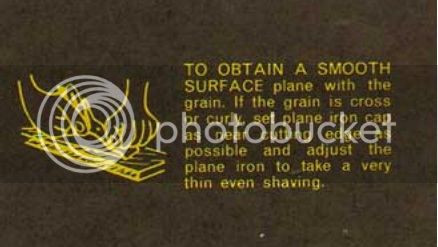Corneel":1auy0sbx said:
I don't know why Bailey designed the frog to be movable. But it certainly isn't the best feature of the (otherwise pretty brilliant) Bailey type planes. Adjusting the frog is a pain with the screws under the blade. What I do know is that adjusting the frog is not neccesary, and I know that you can get extra support when you set the frog flush with the sole. And extra support with these thin blades is a welcome feature.
Hello,
It does not matter whether or not the adjustable frog is easy to do or not, this is a matter of opinion or ability of the user, but adjustable they most definitely are. In fact a finely set mouth is more significant to tame tear out than the cap iron. Since most people set the cap irons too far back to have any effect anyway ( 2mm Jacob is as good as not having one) not being able to (not allowing oneself the facility) to set a fine mouth is a double jeopardy.
Yes, my blades flap about in the breeze, no matter where I set the frog, because the rear mouth does not contact the blade anyhow! But a better cap iron stiffens the blade assy, so I can have a fine mouth adjustment.
It does not matter who uses the plane; cabinetmaker, joiner, whoever, the shaving only needs a tiny amount thicker than itself to pass and it will not clog. If the shaving is 4 thou, then a 5 thou mouth is plenty. It will never clog, unless the cap iron is poorly fitted. A wider mouth is just going to cause torn grain, so why would you want it wide? Theoretical extra support from the rear mouth, but the plane produces tear out-what use is that then? A stiffer blade assy and a fine mouth is what you want, no chatter and no tear out.
If you are only using undemanding wood, then it really doesn't matter if there is any cap iron effect and the mouth is wide enough to post letters through, but then you really shouldn't have an opinion on how to set up a plane. If you do use more demanding wood, treat yourself to a better cap iron and a fine mouth and you will notice a night and day transformation in the result. Add a thicker iron and you'll find your electric sander being made redundant. Quangsheng replacements are as inexpensive as the tinfoil originals, so there is no reason not to.
Mike.





































